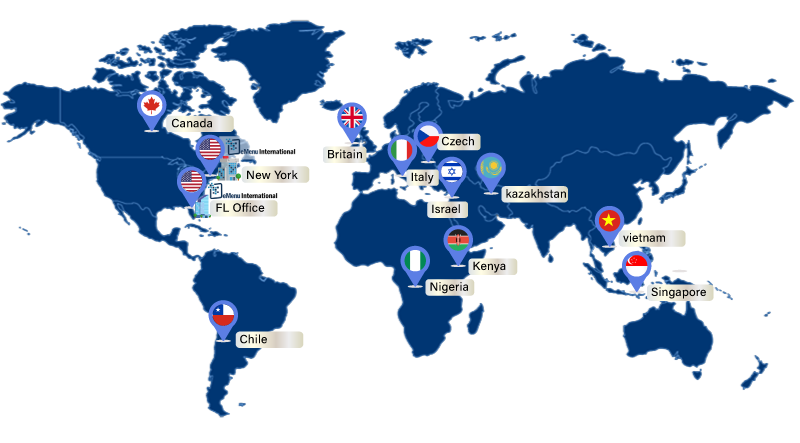Touchscreen menus are changing how restaurants serve guests. These digital tools let diners browse food options on screens like tablets or kiosks. They show vivid photos, details on ingredients, and even suggest pairings. Think about iPad food menus that highlight daily specials or wine lists with tasting notes. They cut wait times and boost sales without extra effort. Ready to upgrade?
Explore touchscreen menu solutions tailored for your restaurant at eMenu International.
What Are Touchscreen Menus and How Do They Work?
Touchscreen menus replace paper ones with digital screens. Diners tap to view dishes, zoom on images, and read descriptions. They often sit on tables or stand as kiosks. The tech uses software to connect with kitchen systems. Orders go straight to cooks, reducing mistakes.
These menus pull data from a central app. Owners update prices or remove sold-out items in seconds. No reprinting needed. Guests filter for gluten-free or vegan options easily. Some even translate into multiple languages for tourists.
In full-service spots, they keep the human touch. Waiters still chat, but screens speed decisions. For quick spots, self-order kiosks handle lines fast. The setup includes hardware like tablets and software for management. Power comes from cloud tech, keeping everything synced.
Key Benefits of Touchscreen Menus for Restaurants
Sales jump with touchscreen menus. Vivid images tempt guests to order more. No more bland text; photos sell desserts and drinks better.
Efficiency saves time and money. Staff spend less on taking orders, cutting labor by up to 15%. Menus update instantly, ditching print costs that add up yearly. Guests order faster, turning tables quicker during peaks.
Guest satisfaction soars. Personal touches like allergy alerts build trust. Multilingual options welcome diverse crowds. Hygiene improves, too, as screens wipe clean easily post-pandemic.
Eco perks matter. Less paper waste appeals to green-minded diners. Plus, data analytics track popular items, helping tweak offerings. Owners spot trends and adjust stock to cut waste.
For wine-focused spots, detailed notes boost choices. Pairings suggestions upsell naturally.
Top Trends in Touchscreen Menus for 2025
AI powers dynamic menus in 2025. Screens suggest dishes based on past orders or weather. If it’s rainy, soups pop up first. This personalization lifts check averages by 10-15%.
Interactive features grow. Guests swipe for 3D views or AR previews of plates. Voice commands add hands-free ease, great for busy spots.
Contactless stays key. Touchscreens pair with QR codes for phone syncing. But full kiosks handle payments too, speeding checkout.
Sustainability integrates. Menus highlight local sourcing or low-waste items. Blockchain tracks ingredients for transparency, building loyalty.
5G boosts speed. Real-time updates happen flawlessly, even in crowded venues. Robotics tie in, with screens guiding robot deliveries.
How to Implement Touchscreen Menus in Your Restaurant
- Start with needs assessment. Count tables and pick hardware, like durable tablets. Budget for software subscriptions.
- Choose reliable providers. Look for easy interfaces and strong support. The installation involves mounting screens securely and training staff.
- Test runs help. Run pilots on busy nights to fix glitches. Gather feedback from guests for tweaks.
- Integrate with POS systems for smooth orders. Cloud backups prevent data loss. Regular updates keep features fresh.
- Costs vary, but ROI hits quickly with sales boosts. Aim for systems with lifetime upgrades.
- Contact our team for setup guidance.
Comparing Top Touchscreen Menu Providers
eMenu International leads with iPad-based systems for full-service restaurants. They boost wine sales 15-22% and food 6-9% through rich visuals and pairings. No self-ordering push; it keeps waiter roles intact. Free lifetime software updates and dedicated managers set them apart. ROI averages $7.15 per dollar spent, beating others in value.
Other providers like Menu Tiger offer QR-focused apps with AI personalization. They suit quick spots but lack deep wine tools. Nento provides digital boards for counters, good for visuals but less interactive at tables.
Advision emphasizes signage with touch options. Their systems work for bars, yet updates feel slower without cloud priority. Split Flap TV brings retro flips digitally, fun for cafes but limited in menu depth.
eMenu International shines in customization, like time-specific menus or event specials. It favors full dining over fast food.
Try eMenu International’s touchscreen menus to elevate your restaurant experience.
eMenu International: Enhancing Dining Experiences
eMenu International has established itself as a pioneer in the digital menu space. Their iPad Food Menu is not just a digital representation of a traditional menu but an interactive experience designed to engage diners and boost sales.
Founded in 2014, eMenu International embarked on an ambitious journey, driven by a group of visionary founders. With an unwavering belief in the potential of touchscreen technology, they set out with a clear mission: to lead a revolution that would make touchscreen menus an indispensable asset for premier dining establishments worldwide.
A Decade of Innovation and Service
For nearly ten years, eMenu International has been at the forefront of bringing restaurants and hotels into the modern era. Through their pioneering technology and commitment to personal service, they have enhanced the dining experience for countless patrons and significantly boosted revenues for over 800 establishments.
Elevating Special Events
eMenu International doesn’t just change how menus are presented; it transforms how special events are catered to. From creating Monday night specials to tailoring menus for upcoming events, their technology ensures that every occasion is uniquely catered for.
Versatile Hours of Service
Understanding the dynamic nature of dining, eMenu International’s solutions adapt to show appropriate menus for breakfast, lunch, and dinner. This flexibility ensures that establishments can always offer their guests the perfect dining options, no matter the time of day.
Championing Sustainability
In a world increasingly aware of the importance of sustainability, eMenu International offers a path to go green. Replacing traditional paper menus with sleek tablets, helps establishments save on printing costs and significantly reduce their environmental footprint.
Efficiency Redefined
One of the key benefits of adopting eMenu International’s technology is the remarkable reduction in wait staff hours. Establishments have reported a 15% reduction in staff hours, attributed to more efficient time management, allowing staff to focus more on engaging with guests and enhancing their overall dining experience.
eMenu International stands as a beacon of innovation in the mining industry. With their revolutionary touchscreen menu technology, they have redefined how establishments serve their guests and played a pivotal role in making dining experiences more enjoyable, sustainable, and efficient. As they continue to lead the charge into the future, eMenu International remains dedicated to elevating the standards of dining around the globe.
Our Services
Contact Us:
-Get in Touch with Us
-Call Us: 1.212.944.5800
-Send an Email: info@eMenu-international.com
-Visit Us: 1560 Broadway, Suite 11111, New York, NY 10036
By integrating eMenu International’s iPad Food Menu, restaurants can elevate the dining experience, streamline operations, and see a tangible boost in revenue.
Future Predictions Beyond 2025
- Post-2025, expect deeper AI integration. Menus predict orders from facial recognition, respecting privacy laws. VR lets guests “tour” farms for ingredients.
- Sustainability pushes eco-scores on items. Menus flag carbon footprints, appealing to young diners.
- Hybrid models blend touch with voice and gestures. Screens adapt to group sizes automatically.
- Global chains standardize with cloud tech. Small spots afford it as costs drop.
- Challenges like cyber security grow, so pick providers with strong protections.
- Overall, touchscreen menus evolve into full experience hubs.
FAQ
What Makes Touchscreen Menus Better Than QR Codes in 2025?
Touchscreen menus offer richer interaction than QR codes. Guests tap large screens for better views, unlike phone scrolling. They integrate payments and suggestions seamlessly. QR codes suit casual spots, but touchscreens boost engagement in full-service, leading to higher upsells.
How Do Touchscreen Menus Handle Multiple Languages?
Most systems support up to five languages at once. Diners switch with a tap, showing translated descriptions and prices. This draws tourists and boosts satisfaction. eMenu International excels here, with easy toggles that keep layouts clean and intuitive.
Can Touchscreen Menus Work Offline?
Yes, top providers cache data for offline use. Menus load from local storage during outages. Updates sync when connected. This reliability suits remote spots. Always test this feature when choosing a system to avoid disruptions.
What ROI Can Restaurants Expect from Touchscreen Menus?
Expect strong returns, like $7 per dollar invested. Sales rise 6-22% on food and drinks. Labor drops 15%, and waste cuts from better analytics. Track metrics post-install to measure gains accurately.
Are Touchscreen Menus Secure for Payments?
Advanced systems use encryption and comply with standards like PCI-DSS. They protect card data and prevent breaches. Regular updates fix vulnerabilities. Choose providers with proven security to keep guest info safe.
Try eMenu International’s touchscreen menus to elevate your restaurant experience.



